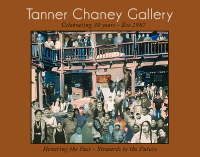Opal

History:
In Twelfth Night
Shakespeare referred to opal as "the queen of gems' " The
Roman historian Pliny described it as having "the fire of the
carbuncle, the brilliant purple of the amethyst and the sea green
color of the emerald, all shining together in incredible union"
The Romans considered opal a symbol of hope, an appropriate attribute
for a gem with a rainbow locked within it. The Arabs believed opals
fell from heaven in flashes of lightning, thus acquiring their fiery
colors.
These romantic notions are inspired by one of the most uniquely beautiful
gemstones nature has ever produced-the dramatic, mysterious opal.
The phenomenon displayed by opal is called play of color. It is caused
by the diffraction of light set up by the layers of silica spheres
in its composition. The effect is similar to the rainbow colors displayed
on a soap bubble, only much more dramatic.
In the 19th century opal acquired a stigma through its role in the
plot of a novel by Sir Walter Scott, Anne of Geierstein. The heroine
owned an opal that burned fiery red when she was angry and turned
ashen grey upon her death. Queen Victoria finally dispelled the curse
by giving opal jewelry wedding presents to her relatives.
Opal has long been regarded as an October birth stone, sharing the
spotlight with tourmaline. The famous French actress Sarah Bernhardt
was born in October and never considered herself well-dressed unless
she was wearing opals.
Important Varieties:
The most treasured variety of opal is black opal with strong play of color, that is, brilliant flashes of different colors. Black opal is so called because of its dark background color.The variety known as white opal has a light background, and the colors displayed lean toward the pastel hues.
Crystal opal has a colorless background and exhibits play of color, but, unlike white or black opal, it lets light pass through it.
Fire opal is also fairly transparent, but its background color may be yellow, orange, red or brown. Sometimes it doesn't even have the typical play of color. It's often called Mexican opal because Mexico is a major source of this type. Fire opal with a red body color is also known as cherry opal.
Opal that is colorless, transparent to semitransparent and has little or no play of color is called jelly or water opal.
Opal quality is judged by the number of colors exhibited and the evenness of the pattern.
Major Source:
Australia is the world's most important source of opal. The opal miner is a strange breed of individual. He chooses to lead a Spartan life in a particularly barren and dry corner of the world while he searches for his rainbows. To escape the extreme temperatures, he must burrow a home underground.Opals are usually found in sandstone or claystone. Deposits are spread over a wide area, and there is little clue to their location. Mining is done on a small scale with hand-operated machinery and small tools. A pocket knife might be the final instrument to loosen an opal from its host rock.

